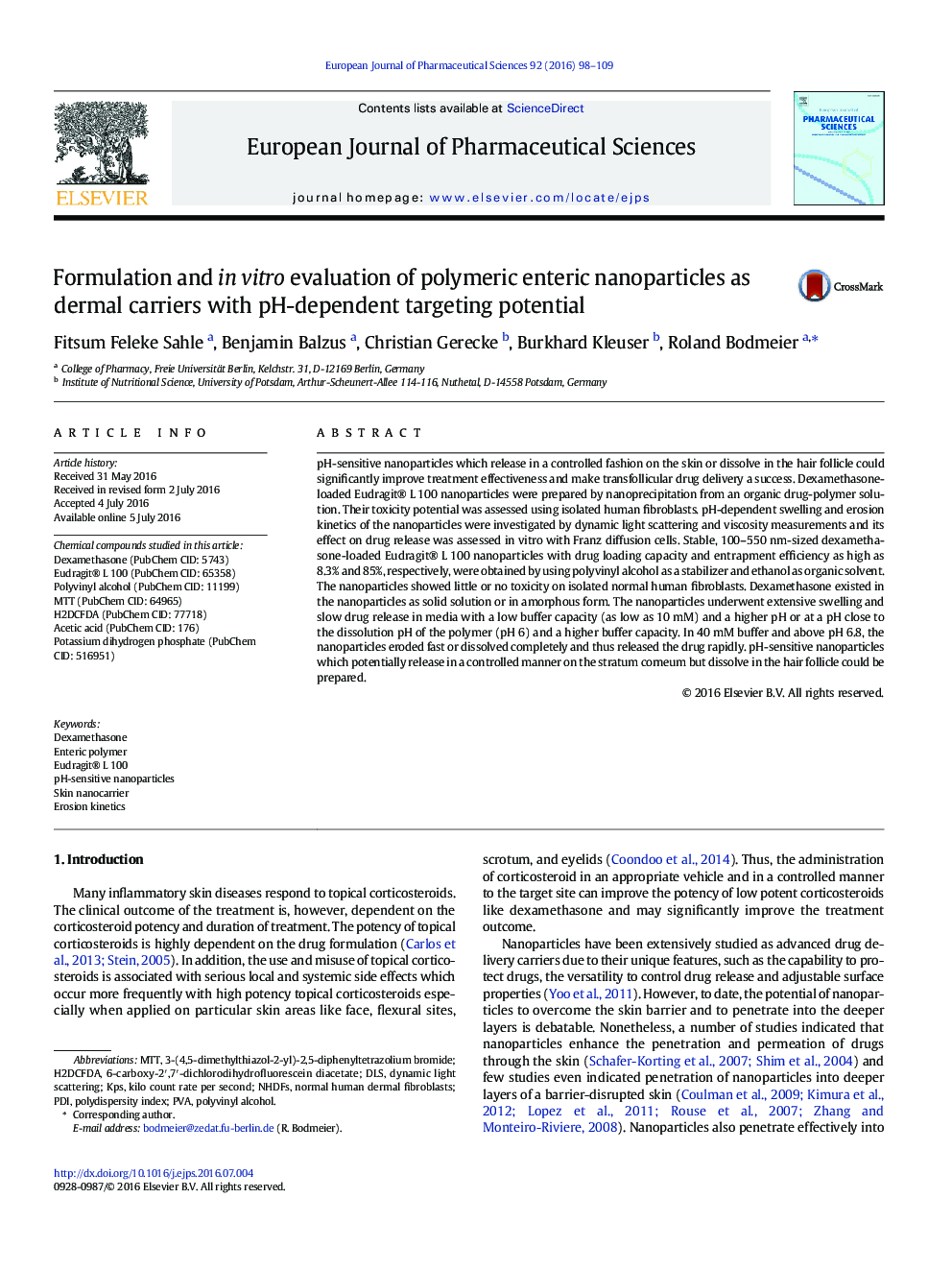| Article ID | Journal | Published Year | Pages | File Type |
|---|---|---|---|---|
| 5809577 | European Journal of Pharmaceutical Sciences | 2016 | 12 Pages |
pH-sensitive nanoparticles which release in a controlled fashion on the skin or dissolve in the hair follicle could significantly improve treatment effectiveness and make transfollicular drug delivery a success. Dexamethasone-loaded Eudragit® L 100 nanoparticles were prepared by nanoprecipitation from an organic drug-polymer solution. Their toxicity potential was assessed using isolated human fibroblasts. pH-dependent swelling and erosion kinetics of the nanoparticles were investigated by dynamic light scattering and viscosity measurements and its effect on drug release was assessed in vitro with Franz diffusion cells. Stable, 100-550Â nm-sized dexamethasone-loaded Eudragit® L 100 nanoparticles with drug loading capacity and entrapment efficiency as high as 8.3% and 85%, respectively, were obtained by using polyvinyl alcohol as a stabilizer and ethanol as organic solvent. The nanoparticles showed little or no toxicity on isolated normal human fibroblasts. Dexamethasone existed in the nanoparticles as solid solution or in amorphous form. The nanoparticles underwent extensive swelling and slow drug release in media with a low buffer capacity (as low as 10Â mM) and a higher pH or at a pH close to the dissolution pH of the polymer (pHÂ 6) and a higher buffer capacity. In 40Â mM buffer and above pHÂ 6.8, the nanoparticles eroded fast or dissolved completely and thus released the drug rapidly. pH-sensitive nanoparticles which potentially release in a controlled manner on the stratum corneum but dissolve in the hair follicle could be prepared.
Graphical abstractDownload high-res image (278KB)Download full-size image
